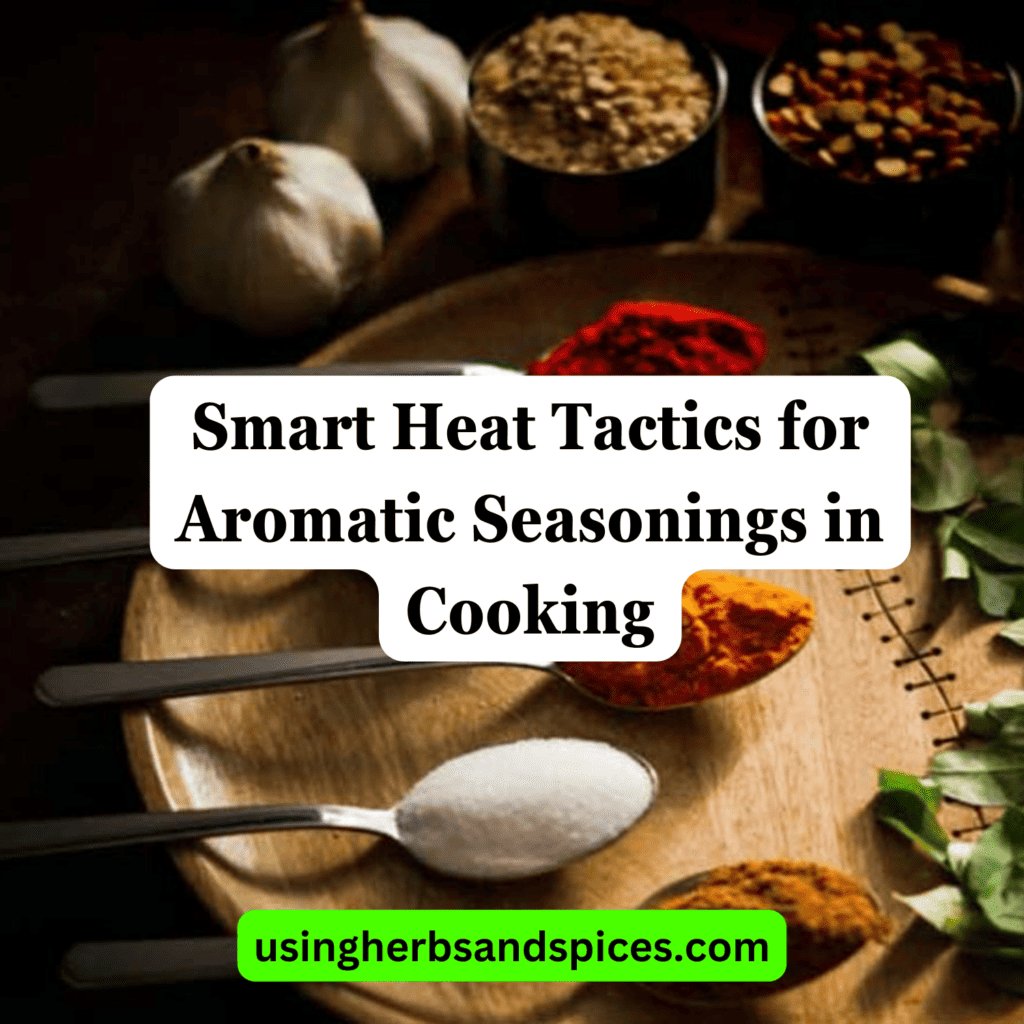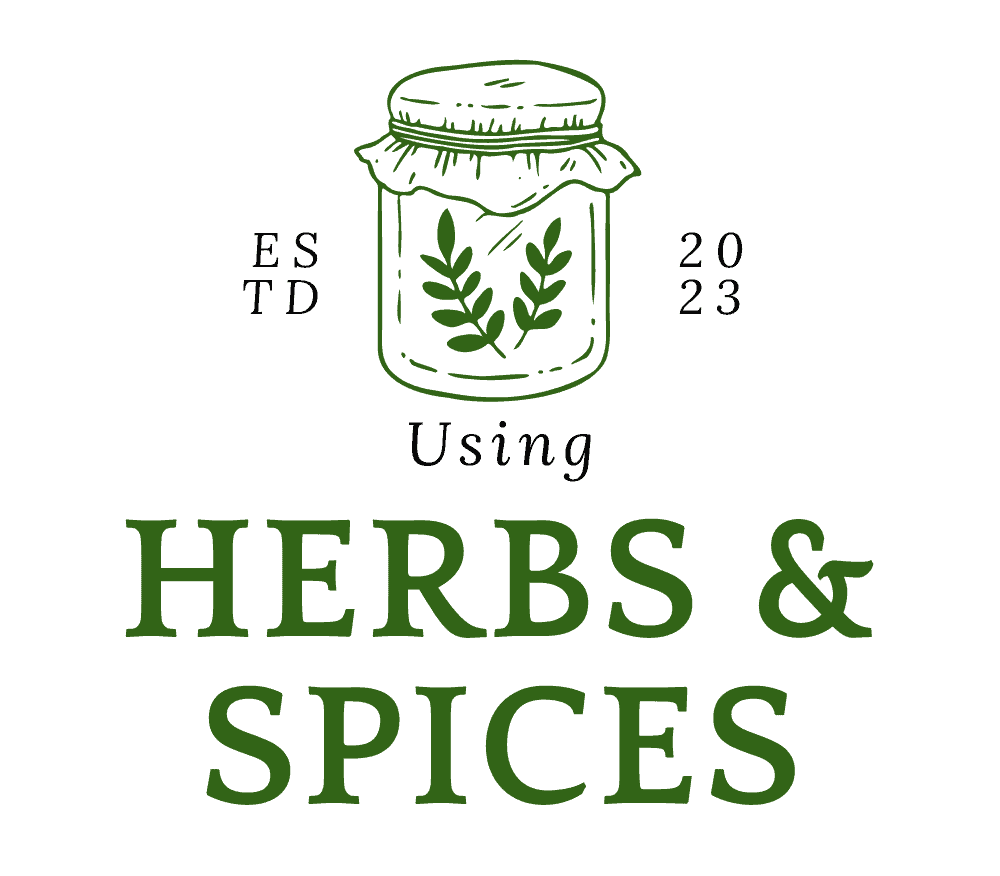Just as a painter blends colors to create a masterpiece, you wield heat to unlock the full potential of aromatic seasonings in your culinary creations. You’re not just cooking; you’re orchestrating a symphony of flavors where each spice plays a pivotal role.

By mastering smart heat tactics, you’ll ensure that your dishes resonate with the warmth and comfort of well-balanced aromatics. Whether you’re toasting to enhance depth or timing the incorporation of spices to maintain their integrity, you’re part of a community that values the subtle art of coaxing out flavors.
Together, let’s explore the nuanced world of spice heat levels, perfect the technique of toasting, and learn to balance and preserve the delicate nature of aromatic seasonings in your everyday cooking.
Welcome to the circle where your passion for flavor makes you belong.
Table of Contents
Key Takeaways
- Grasp the varying heat levels of spices
- Use finer grating for immediate and potent release of flavors
- Familiarize yourself with the Scoville scale for precise knowledge
- Add spices early in the cooking process for deep, complex flavors
Understanding Spice Heat Levels
You’ll need to grasp the varying heat levels of spices to master their impact on your dishes. Each spice comes with its own heat signature, primarily determined by its capsaicin content—the compound that gives peppers their fiery sensation. Analyzing this content allows for a nuanced understanding of how much warmth a spice will contribute to your culinary creations.
Innovative spice grating methods can influence the intensity of the heat. A finer grate will increase the surface area, causing a more immediate and potent release of flavors and heat, whereas a coarser grind might offer a slower, more gradual infusion. Precision in these techniques ensures that you aren’t accidentally overpowering your dish with an unexpected spice level.
Embrace a methodical approach to capsaicin content analysis. By familiarizing yourself with the Scoville scale, which measures the pungency of peppers, you’ll gain insight into how various spices rank in heat and how they’ll resonate within the community of flavors in your dish. This precise knowledge fosters a sense of belonging, as you’ll confidently navigate the heat levels, creating dishes that welcome everyone to the table with the perfect spicy warmth.
Timing Spice Incorporation
In addition to understanding heat levels, you’re tasked with mastering the timing of spice incorporation, as it’s crucial for achieving the desired flavor profile in your dishes. When you’re at the helm of your kitchen, consider the transformative power of spice grinding and oil infusion.
Freshly ground spices unveil a bounty of flavors that pre-ground counterparts simply can’t match. But how do you ensure these flavors aren’t just present, but prominent?
Here’s a strategic approach:
- Spice grinding: Unleash peak freshness by grinding spices just before use. This maximizes volatile oils and aromatics.
- Early addition: For deep, complex flavors, add spices early in the cooking process, allowing them to meld and evolve with the dish.
- Oil infusion: Toast spices in oil to create a flavor-packed base. This technique ensures that the essence of the spices permeates the entire dish.
- Finishing touches: Some spices shine brightest when introduced at the end, lending a fresh, piquant note.
Your analytical mind recognizes that timing isn’t just a detail—it’s the backbone of culinary alchemy. By incorporating spices with precision and care, you invite your guests into a world where each bite is a testament to your expertise and a celebration of shared culinary traditions.
Techniques for Toasting Spices
Toasting spices can transform your dish by unlocking rich, complex flavors and aromas that elevate your cooking. This technique, a cornerstone in your culinary repertoire, fosters a sense of community through shared meals enhanced by these vibrant seasonings.
When you dry roast spices, you’re employing a method that’s both ancient and innovative. You’ll need to precisely heat a pan, preferably heavy-bottomed to ensure even heat distribution, and then add your whole spices. The key is to constantly shake or stir them, ensuring every particle gets equal attention, preventing burning, and coaxing out the essential oils.
Spice blooming goes a step further. It’s about gently frying ground spices in oil, unlocking their full potential. This method is particularly effective as the oil acts as a carrier for the flavors, dispersing them evenly throughout the dish. It’s crucial, however, to manage the heat meticulously. Too high and the spices may turn bitter; too low and they’ll remain dormant, their magic untapped.
Balancing Flavors With Heat
How do you strike the perfect balance between heat and time to ensure your seasonings release their maximum flavor without burning? The key lies in mastering heat calibration and embracing the art of flavor layering. You’re part of a community that values the subtle dance of spices and heat—where each aromatic has a voice in the chorus of your dish’s flavor profile.
Let’s dive into the specifics:
- Start with a moderate heat to gently wake up spices, ensuring they don’t scorch.
- Use a stopwatch or timer for precision; even a few extra seconds can lead to overcooking.
- Stir spices constantly to distribute heat evenly and prevent hotspots.
- Trust your senses; the moment you smell the full-bodied aroma, it’s time to move on.
Heat calibration is about understanding the delicate relationship between temperature and time. It’s a methodical approach that coaxes out the depths of flavor from each spice, building a layered complexity that’s felt in every bite.
Preventing Aromatic Deterioration
With careful attention to heat, you’ll prevent your aromatic spices from losing their vibrant essence and turning bitter. Spice storage is a critical factor in maintaining the integrity of your seasonings. Store them in a cool, dark place to minimize exposure to degrading elements like light and moisture. This practice not only retains the potency of flavors but also ensures that the spices are primed for optimal release when they hit the pan.
When you’re ready to cook, consider the innovative technique of oil infusion. Gently warming spices in oil releases their aromatic compounds into the fat, creating a flavor base that’s both complex and nuanced. This method also acts as a buffer, safeguarding the spices from the direct, aggressive heat that can cause deterioration.
To execute this precisely, heat your oil on a low to medium setting before adding the spices. You’re aiming for a subtle sizzle, not a fierce fry. This low-and-slow approach allows the spices to bloom, enhancing their fragrance and flavor without risking the bitterness that comes from overheating.
Frequently Asked Questions
How Do Differing Oil Types Affect the Flavor Release of Aromatic Seasonings When Heated?
Different oil types have unique flavor chemistry, affecting how you’ll experience the infusion of seasonings. Choose oils wisely to ensure the taste of your dishes resonates with the warmth of shared traditions.
Can Microwave Use Be a Viable Method for Activating the Aromatics in Spices, and if So, How?
You can unlock spices’ hidden symphonies through microwave toasting, a novel spice experimentation. It’s precise, retaining flavor while fostering a sense of culinary community. However, technique is key for the perfect aromatic encore.
Are There Specific Kitchen Tools or Gadgets Designed to Enhance the Heating Process of Spices Without Burning Them?
You’ll find spice roasters with built-in temperature control perfect for toasting spices evenly. They’re innovative, precise, and foster a sense of culinary community through shared flavor-enhancing experiences.
How Do Altitude and Atmospheric Pressure Impact the Heating Techniques for Spices and Herbs?
At higher altitudes, you’ll need to adjust your cooking methods. Pressure cooking compensates for lower atmospheric pressure, ensuring your spices infuse flavors effectively and create a sense of home in every dish.
Is There a Significant Difference in the Heating Tactics for Whole Spices Versus Ground Spices When It Comes to Preserving Their Aromatic Qualities?
Yes, you’ll find that whole spices require slower heat control for toasting to maintain aromatics, while ground spices need quicker, more precise heat to prevent burning and preserve their fragrant qualities.
Tactics for Seasonings in Cooking
In mastering the alchemy of heat and spices, you’ve woven warmth into every bite. Remember, it’s not just about igniting flavors; it’s about sustaining their essence.
As you dance with spices, let them simmer at the edge of their vitality. In this culinary ballet, the precision of your steps can elevate a simple meal to an aromatic masterpiece.
Embrace the subtle artistry; your kitchen is now a crucible where seasoned whispers transform the mundane into the divine.
